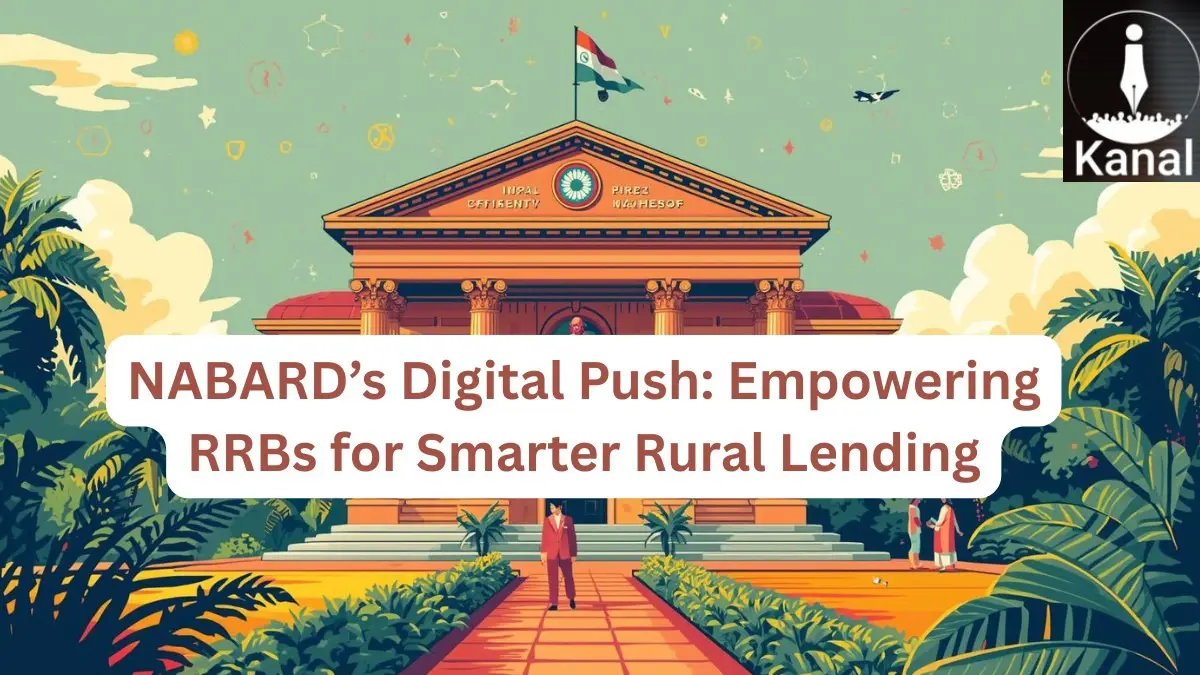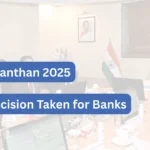New Delhi: The Regional Rural Banks (RRBs) are set to undergo a significant digital transformation with the introduction of a centralized digital credit infrastructure (CDCI) by NABARD. This initiative aims to enhance RRBs’ competitiveness against non-banking finance companies (NBFCs) and microfinance institutions (MFIs), following a consolidation policy that streamlines their operations across the nation. By digitizing lending processes, this move seeks to improve financial inclusion and operational efficiency in India’s rural economy.
Transforming Rural Banking in India
The Regional Rural Banks (RRBs) have historically played a crucial role in promoting financial inclusion among India’s rural population. As they stand at the brink of a significant digital transition, the National Bank for Agriculture and Rural Development (NABARD) is introducing a centralized digital credit infrastructure (CDCI), aimed at automating the entire lending process. This transformative strategy is vital for RRBs, which now contend with the rapid expansion of non-banking finance companies (NBFCs) and microfinance institutions (MFIs) in rural areas.
The initiative aligns with the government’s One State–One RRB policy, which will streamline the current 43 RRBs into just 28 by May 2025. This consolidation is expected to drive cost-efficiency and scalability, allowing the newly formed banks to operate more effectively. With 22,158 branches across 26 states and three Union Territories, RRBs are ideally positioned to deepen their impact on financial inclusion—but modernization is critical to this mission.
A Comprehensive Digital Credit Infrastructure
NABARD’s recent annual report highlights the significance of the CDCI, which is set for implementation by September 2025. Unlike the fragmented loan origination systems that RRBs currently utilize, the CDCI aims to digitize and automate the entire credit cycle from application to disbursal and monitoring. This streamlined approach is anticipated to reduce turnaround times dramatically and enhance customer experience.
In addition to improving operational efficiency, NABARD plans to support RRBs in developing innovative loan products tailored to meet the specific needs of various sectors. For instance, RRBs may introduce housing loans backed by first-loss default guarantees and unique solutions for micro, small, and medium enterprises (MSMEs). By diversifying their offerings, these banks can effectively tap into markets that are currently dominated by NBFCs and MFIs.
Financial Growth and Challenges
Despite facing structural challenges, RRBs have shown promising financial growth. According to recent accounts, as of March 2025, the aggregate deposits of RRBs reached ₹7.14 lakh crore, marking an 8.2% increase over the previous year. Meanwhile, loans outstanding rose by 12.1% to ₹5.27 lakh crore, signaling a revival in demand. However, this also emphasizes the urgent need for RRBs to adopt advanced lending systems to better manage risk.
The journey of RRBs, which began in 1975, has been largely influenced by government policies aimed at rural development. Designed as an extension of the cooperative credit system, the ownership structure of RRBs — with 50% government stakes, 15% state government, and 35% by sponsoring public sector banks — ensures a solid foundation. Now, with digital initiatives and significant consolidation, RRBs are transitioning into formidable competitors in the rural lending landscape.
Future Outlook for RRBs
The upcoming year will be a pivotal one for RRBs as they embark on this digital journey. If the CDCI successfully addresses existing operational gaps, it can enhance the competitive edge of these banks. However, their success will depend on how effectively they can integrate technology, improve skill sets among their workforce, and adapt to the changing expectations of customers, many of whom are already influenced by fintech solutions and private lenders.
In summary, NABARD’s initiative offers RRBs both a strategic lifeline and a unique opportunity to grow. The key challenge remains for these banks to fully capitalize on this transformation opportunity, ensuring that they thrive in a rapidly evolving financial ecosystem.
Key Financial Figures of RRBs
| Metric | Amount (in ₹ lakh crore) | Annual Growth (%) |
|---|---|---|
| Aggregate Deposits | 7.14 | 8.2 |
| Outstanding Loans | 5.27 | 12.1 |
| Number of Branches | 22,158 | N/A |
| States Covered | 26 States + 3 UTs | N/A |
Bankerpedia’s Insight 💡
The digital transformation of Regional Rural Banks (RRBs) is pivotal for India’s banking and finance sector. By implementing a centralized digital credit infrastructure, NABARD aims to enhance efficiency and better serve rural communities, which comprise a significant portion of the population. This modernization will help RRBs compete with nimble fintech companies, fostering financial inclusion amidst rising competition. For readers, staying informed about the changes in banking services and exploring available credit options can empower sound financial decisions, especially as RRBs begin offering innovative loan products and streamlined processes.
How Does This Affect the Banking Ecosystem? 🏦
- Bank Employees → Increased demand for digital skills among bank employees.
- Bank Management → Enhances competitive position through digital transformation initiatives.
- Bank Customers → Faster loan processing and improved customer experience.
- Investors / Shareholders → Increased competitiveness may boost returns for investors.
- Regulators (RBI, SEBI, Govt.) → Regulators face pressure to enhance oversight and promote modernization.
- General Public → Improved access to digital loans for rural populations.
Research References 📚
Loved our Research? ❤️
Bankerpedia turns financial confusion into clarity!
Subscribe to our YouTube channel for unbiased insights, financial literacy & practical banking wisdom.










